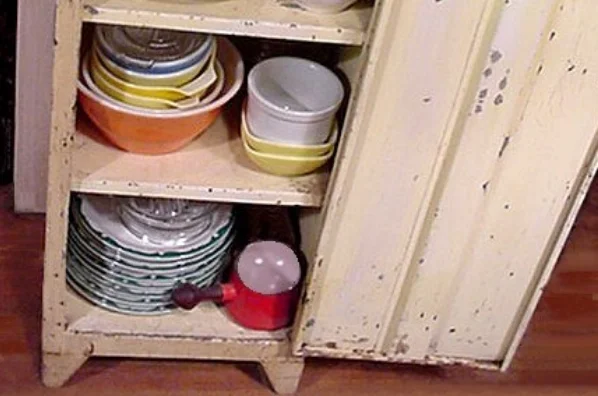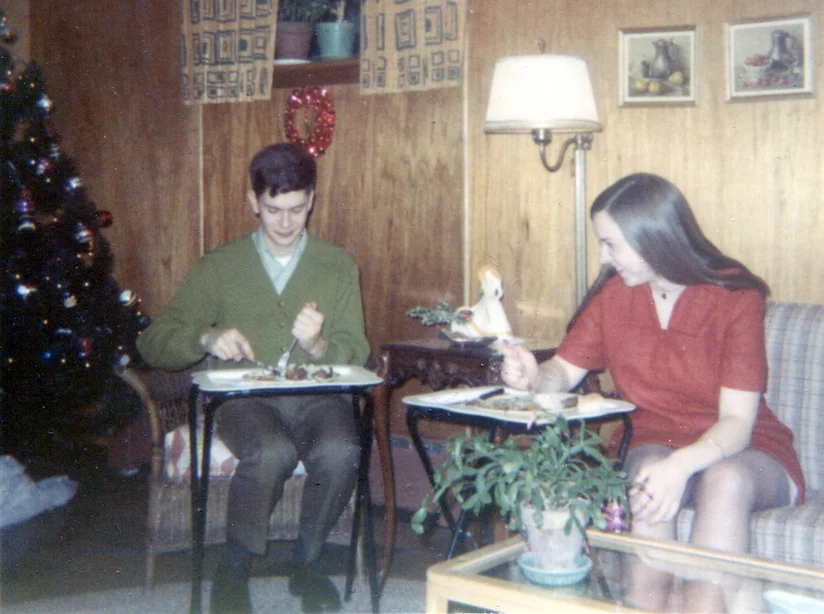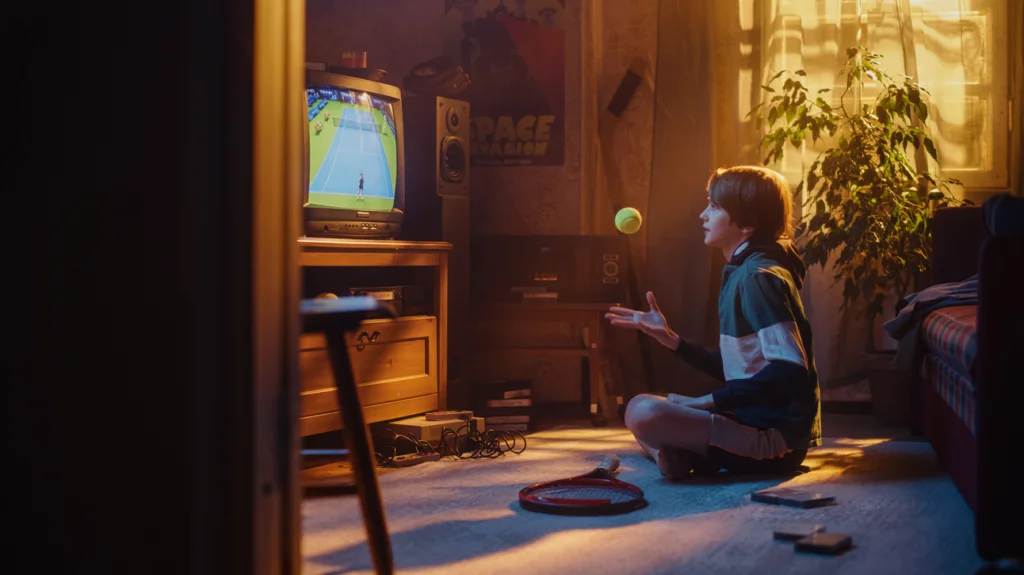Before scheduled playdates, organized sports dominated childhood, and helicopter parenting became the norm, the after-school hours of the 1970s represented a magical interlude of freedom and ritual. Those precious hours between the final school bell and dinner time belonged entirely to us—a daily mini-vacation with its own unwritten but universally understood rules. For kids who grew up during this distinctive decade, the routine was both comfortingly predictable and gloriously unstructured, creating memories that still bring a wave of nostalgia decades later.
1. The Mad Dash Home to Catch Afternoon Cartoons

The moment that final school bell rang, the race against the clock began. With cartoons starting promptly at 3:30 on most local stations, every minute counted in the journey from classroom to living room couch. You’d power-walk or bike at top speed, shedding school gear at the door like a NASCAR pit stop, and slide into position just as the familiar theme music began. Animator Mentor traces just what happened to these treasures of childhood television.
These weren’t the Saturday morning cartoons that you could luxuriate in for hours—these were the precious weekday offerings that felt somehow more special because of their brevity. Shows like “Tom and Jerry,” “Looney Tunes,” or “Scooby-Doo” reruns created a daily appointment viewing that no kid wanted to miss, especially since there was no way to record or stream them later. That half-hour or hour of animated escape served as the perfect decompression chamber between the structured school day and your evening at home.
2. Raiding the Pantry for That Perfect After-School Snack

The after-school hunger was a unique beast—not quite lunch, not quite dinner, but an essential fueling station for growing bodies and active minds. The pantry raid was performed with the precision of a military operation as you scanned shelves for the perfect combination of sweet, salty, and filling. Nabisco cookie sleeves, particularly Chips Ahoy or Nutter Butters, were the gold standard, while Hostess cupcakes or Twinkies represented the jackpot of snack options. For those looking to recreate the past, Craft Your Happy Place has a list of classic ’70s snacks.
The classic move involved pouring an oversized glass of milk (often in those plastic cups with textured sides) and arranging your snack bounty on a TV tray or directly on the carpet in front of the television. The trick was consuming enough to satisfy the immediate hunger without spoiling your appetite for dinner—a delicate balance rarely achieved, much to mothers’ ongoing frustration. Some kids even developed elaborate rationing systems, parsing out cookies one by one to extend the snacking experience through an entire episode of “The Brady Bunch.”
3. Checking the Mailbox for Cereal Box Prizes

Long before email notifications, the physical mailbox held daily potential for excitement in the form of mail-away prizes from cereal box promotions. After dutifully collecting box tops or UPC symbols and waiting the excruciating “4-6 weeks for delivery,” the daily mailbox check became a ritual of perpetual hope and occasional jubilation when a package finally arrived. Of course, Stamp Bears reminds readers, that mail also comes with a rich history of stamp collecting.
These treasures—decoder rings, plastic figurines, iron-on patches, or glow-in-the-dark anything—had been worth every bite of occasionally questionable cereal consumed to earn them. The unboxing moment, often performed right there at the edge of the driveway, was a triumph of consumer persistence that today’s one-click shopping generation might never fully appreciate. The disappointment of yet another day with no package was always softened by the knowledge that tomorrow held fresh possibility.
4. Spreading Homework Across the Kitchen Table

Before dedicated home offices and bedroom desks became standard, the kitchen table transformed into homework central each afternoon. You’d spread books, worksheets, and pencils across the Formica surface, creating a temporary command center for tackling multiplication tables or spelling words while Mom started dinner preparations nearby.
This homework station, centrally located in the home’s busiest room, created a unique blend of concentration and distraction. You’d work through math problems while absorbing the ambient sounds of dinner preparation, occasionally looking up to answer a parent’s “How was school today?” with the universal child response of “Fine.” The proximity to the refrigerator provided convenient snack access, while the shared space meant homework questions could be casually lobbed toward a parent chopping vegetables who might—or might not—remember enough about fractions to be helpful.
5. Calling Friends on the Family Phone

With homework temporarily dispatched (or strategically postponed), the kitchen wall phone became the social coordination center for the remainder of the afternoon. You’d stretch the coiled cord to its absolute limit, seeking whatever privacy could be achieved in homes where the phone was deliberately placed in the most public area possible.
These calls followed a predictable script—first establishing what had happened in the crucial hours since school ended, then negotiating possible in-person meetups before parents called everyone in for dinner. The conversations might seem pointless to eavesdropping adults, but they maintained the vital social network that existed beyond school hours. For latchkey kids with more restricted mobility, these phone check-ins represented the essential connection to the outside world, bridges between today’s social scene and tomorrow’s classroom dynamics.
6. Playing Outside Until Dinner Without Checking In

Perhaps the most striking difference between ’70s childhood and today was the glorious freedom of unsupervised outdoor play. You’d drop your school bag, change into play clothes, and head outside with the simple instruction to “be back when the streetlights come on” or “when I call you for dinner.” No GPS tracking, no text check-ins, no scheduled activities—just the neighborhood as your domain.
This free-range approach created natural gathering spots—the vacant lot perfect for pickup baseball, the cluster of trees ideal for fort-building, or the driveway with the best basketball hoop. Kids roamed in packs, negotiating complex social hierarchies and game rules without adult intervention. The occasional skinned knee or minor disagreement was handled on the spot through kid justice, creating resilience that came from figuring things out on your own while simultaneously knowing that dinner and Band-Aids waited reliably at home.
7. Riding Bikes to the Corner Store

Those quarters and dimes saved from lunch money or stashed from allowance enabled the pivotal after-school journey to the corner store—a trip that represented both commerce and freedom for ’70s kids. You’d gather a few friends, hop on your banana-seat bikes or Schwinn Stingrays, and pedal to the local convenience store where a world of penny candy, trading cards, and sugary drinks awaited.
The careful deliberation at the candy counter—weighing the relative merits of Bottle Caps versus Pixy Stix, calculating exactly how many pieces of Bazooka gum your coins would buy—was economic education in its most practical form. The return journey, pockets stuffed with treats and baseball cards, created a brief sugar-fueled euphoria before heading home. These store runs operated on an unspoken schedule that ensured you’d be back well before dinner, with just enough time to hide any uneaten candy for tomorrow’s enjoyment.
8. Perfecting the Art of the TV Dinner Tray

On special occasions when parents went out or had evening commitments, the TV dinner emerged from the freezer like a Space Age miracle of convenience. The aluminum tray with its separate compartments promised a complete meal and the rare privilege of eating while watching television—a combination that felt deliciously rebellious to kids raised on proper family dinner protocols.
Positioning the folding TV tray at precisely the right distance from the screen was a skill mastered through trial and error. The mysterious heating instructions—cook for X minutes, stir potatoes, cook for Y more minutes—created meals that were invariably scalding hot in some sections and stubbornly frozen in others. Yet somehow, the novelty of this dining arrangement made every bite taste better, from the unnaturally bright corn kernels to the oddly textured brownie dessert tucked in its own compartment.
9. Keeping One Ear Open for Your Name Being Called for Dinner

As the afternoon wore on, a sixth sense developed—the ability to play at the furthest reaches of parental voice projection while still detecting your name being called for dinner. This remarkable feat of selective hearing allowed for maximum play time while minimizing the risk of getting in trouble for being late to the table.
The moment that distant parental voice called your name, an instantaneous calculation occurred: How many more minutes could you realistically squeeze out before a second, more irritated call? Was this the first warning or the final notice? The strategy often involved acknowledging with a distant “Coming!” while completing one last critical game move or bicycle jump. This delicate negotiation between play time and punctuality taught kids timing skills no scheduled activity could provide.
10. Building Elaborate Blanket Forts in the Living Room

After-school architecture reached its pinnacle in the living room blanket fort—a temporary structure built with couch cushions, dining chairs, and every available blanket and sheet. These textile palaces required engineering ingenuity to ensure proper stability, ceiling height, and strategic entrance flaps, constructed just in time to serve as the perfect cartoon-viewing habitat.
Inside these fabric sanctuaries, the normal rules of household behavior seemed slightly suspended. You could bring snacks that might otherwise be banned from the living room, whisper secrets with siblings or friends, and create a world with its own laws and logic. The inevitable parental decree to dismantle your creation before bedtime was always met with passionate negotiation—”Just one more night?”—and the reluctant acceptance that even the greatest architectural achievements of childhood were temporary by design.
11. The Pre-Dinner Board Game Challenge

The precious window between homework completion and dinner preparation was often filled with intense board game competitions, played on the living room floor or cleared kitchen table. Games like Sorry!, Trouble with its satisfying pop-o-matic bubble, or the endurance test of Monopoly created daily rematches and ongoing tournaments among siblings and neighborhood friends.
These analog gaming sessions taught negotiation skills, strategic thinking, and—perhaps most importantly—how to lose with reasonable grace. The distinct sounds became part of the afternoon soundtrack: dice tumbling across the Parcheesi board, the click of Operation tweezers against metal edges, the shuffle of card decks being prepared for another round of Go Fish. Unlike today’s digital games, these face-to-face competitions required reading opponents’ expressions and managing your own as fortunes shifted with each turn.
12. The Nightly Negotiation for Just “Five More Minutes” of TV

As dinner concluded and evening routines loomed, the final battle of the afternoon began—the campaign for extended television privileges. The opening offer of “just five more minutes” to see the end of a favorite show was presented with the earnestness of a diplomat at peace talks, often accompanied by promises of immediate pajama-changing or tooth-brushing afterward.
Parents, recognizing this daily delaying tactic, would counter with conditional terms: “Only if your homework is finished” or “Just until the commercial break.” This good-faith negotiation taught valuable lessons about compromise, even as both parties understood it was merely today’s skirmish in an ongoing campaign. When the television was finally switched off—often with a distinctive click and fading white dot on early sets—it marked the official end of the after-school domain and the transition to evening family time.
The after-school hours of the 1970s existed in a unique space between supervision and independence, between childhood freedom and approaching responsibility. Without structured activities filling every minute, these daily micro-adventures allowed kids to develop decision-making skills, social intelligence, and personal resourcefulness that shaped a generation. While today’s children might have more educational opportunities and safety measures, there’s something to be said for those simple after-school rituals—racing home for cartoons, gathering with neighborhood friends, or savoring that perfect cookie and milk combination. In their simplicity lay their magic, creating memories that have outlasted the decade itself.


